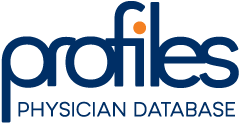Navigating Extended Hiring Timelines: Strategies for Physician Recruiters in 2025
In 2025, physician recruiters are facing one of the most prolonged hiring landscapes in recent memory. With average time-to-fill exceeding 125 days for primary care roles—and often longer for specialties like neurology, orthopedics, and psychiatry—recruitment teams are being challenged to adapt quickly in a highly competitive environment.

Specialty care roles frequently stretch beyond 135 days to fill, and AAPPR’s latest benchmarking report shows that psychiatry, gastroenterology, and cardiology are among the most time-intensive specialties to recruit. These delays are not just frustrating—they are costly. Estimates suggest that each month a physician vacancy persists, hospitals can lose $150,000 to $250,000 in revenue, not including additional costs tied to staff burnout and reduced access to care.
To navigate this reality, recruiters must shift from reactive to proactive, armed with strategies that combine long-range planning, data-informed decision making, and deep knowledge of specialty-specific motivators.
Start Early with Specialty-Focused Pipelines
One of the most effective ways to reduce time-to-fill is to build segmented pipelines before there’s an urgent need. Lead times vary significantly: critical care and cardiology can take up to 180 days to fill, while family medicine roles average closer to 120 days. Radiology, dermatology, and psychiatry continue to see critical shortages well into 2025.
Use both historical data and predictive modeling to identify which roles will likely open within the next 6–12 months. Leverage the PracticeMatch Physician Database to begin nurturing passive candidates by specialty. Focus on high-priority areas and make early outreach part of your long-term sourcing strategy.
Create evergreen content—such as specialty-specific landing pages, email cadences, and personalized outreach scripts—that target physicians based on their clinical focus and geographic preferences. Use engagement analytics to refine your outreach over time.
Tailor Candidate Experience by Specialty
It’s not just about faster hiring—it’s about smarter hiring. AAPPR data indicates that candidate drop-off rates often stem from a mismatch between what physicians want and what recruiters offer.
Deepen your understanding of specialty-specific motivators. For example:
- Orthopedic surgery candidates often prioritize autonomy in the OR, access to robotics or subspecialty equipment, and equity opportunities.
- Psychiatrists tend to value lower patient loads, hybrid/telehealth flexibility, and wellness-focused organizational culture.
- Cardiologists and interventionalists may be drawn by procedural volume, call burden relief, or clinical trial access.
Use these preferences to shape how you position your roles. Highlight relevant incentives in job ads, outreach messages, and initial conversations—not just during offer negotiation.
Align Internal Expectations Early—Especially for Competitive Specialties
Internal misalignment can sabotage even the best sourcing efforts. Especially in high-demand specialties, delays often come from unclear salary thresholds, credentialing requirements, or differing priorities among stakeholders.
Host a formal intake session before each new search. Review recent comp data and time-to-fill benchmarks (AAPPR and PracticeMatch reports) to ground decisions. Clarify must-haves versus nice-to-haves, especially around call expectations, visa sponsorship, and practice volume. Align on who owns decision-making and timelines for each stage.
For large systems, consider standardizing specialty-specific hiring playbooks with pre-approved compensation packages, credentialing timelines, and relocation protocols to reduce lag.
Leverage Virtual Career Fairs Strategically
Virtual career fairs are no longer just a pandemic workaround—they’re a competitive edge. In 2024, PracticeMatch observed a 37% increase in candidate attendance year-over-year at virtual events, with psychiatry, internal medicine, and hospitalist roles drawing the most traffic.
Use fairs not only for immediate hiring but also for brand building. For each fair:
- Come prepared with specialty-specific talking points and FAQs
- Offer post-event follow-up calls or direct scheduling links
- Track engagement by role to fine-tune future participation
PracticeMatch Career Fairs offer focused events by specialty and location, which can be invaluable for building targeted pipelines in competitive regions.
Strengthen Onboarding and Pre-Start Engagement
An accepted offer is no longer the finish line. According to Medicus Healthcare Solutions, up to 15% of signed physicians reconsider before day one due to more attractive offers or uncertainty during onboarding.
Implement a pre-start engagement plan that includes:
- A welcome video from department leadership
- A peer mentor assignment within the same specialty
- Regular updates from HR with housing, licensing, or relocation checklists
- Personalized touches such as a "First 90 Days" roadmap
Use PracticeMatch’s candidate engagement tools to automate touchpoints while still maintaining a personalized feel.
The Bottom Line
Recruiting physicians in 2025 demands more than speed—it demands strategy. Time-to-fill may be growing, but recruitment teams that lean into data, specialty awareness, and proactive engagement will be positioned to compete more effectively and fill roles with greater confidence.
If you're ready to accelerate your hiring timelines while improving physician fit and retention, PracticeMatch offers the platforms, data insights, and event access you need to deliver results in today's market.
